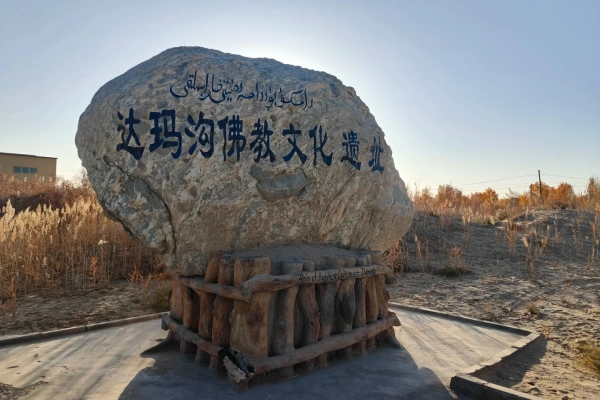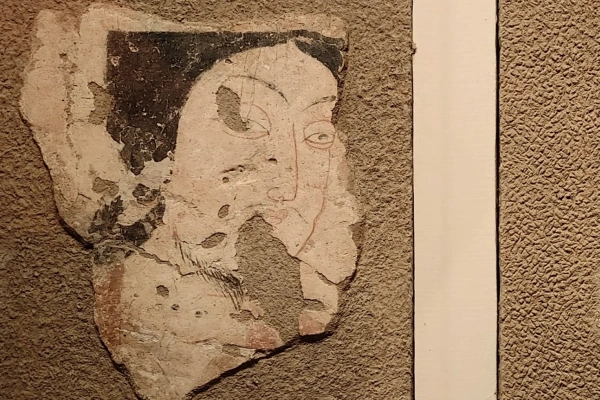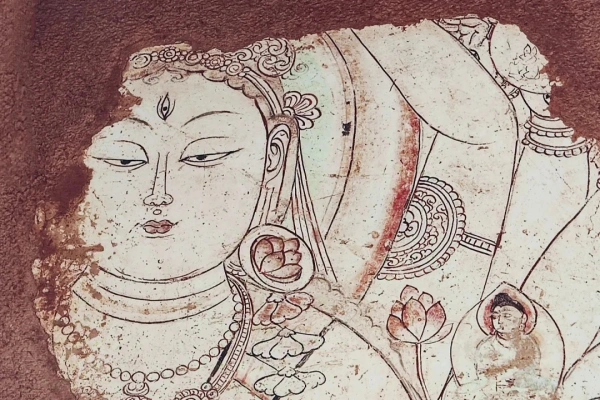Damagoun Buddhist Ruins
Historical Overview
The history of Damagoun Buddhist Ruins is deeply intertwined with the spread of Buddhism in the area. It served as a crucial center for Buddhist monks and practitioners, facilitating the dissemination of Buddhist teachings and cultural exchanges. Over the years, various dynasties contributed to the construction and expansion of the site, leaving behind a diverse array of architectural styles and religious artifacts. These ruins have witnessed the ebb and flow of history, standing resilient against the test of time and preserving the essence of ancient Buddhist civilization.
Structural Layout
The Damagoun Buddhist Ruins are spread across a vast area, with a well - planned structural layout that takes advantage of the natural landscape. The site is divided into different zones, each housing distinct architectural elements. The main temple complex is situated at the heart of the ruins, surrounded by smaller shrines and monastic quarters. The buildings are often built on elevated platforms, with intricate stone carvings and decorative elements adorning their facades. Winding paths connect different parts of the site, creating a sense of mystery and exploration as visitors navigate through the ancient ruins.

Major Attractions
Main Temple Hall: This is the centerpiece of the Damagoun Buddhist Ruins. The hall features a grand entrance and a spacious interior, housing large statues of Buddha and other deities. The walls are adorned with exquisite murals depicting scenes from Buddhist scriptures, showcasing the high level of artistic achievement of the time.
Stupa Garden: A collection of ancient stupas can be found in this area. These dome - shaped structures are significant Buddhist monuments, often containing relics of revered monks or important Buddhist texts. The stupa garden provides a serene and contemplative space for visitors to reflect on the teachings of Buddhism.
Monastic Quarters: Explore the remains of the monks' living quarters, which include small cells, dining halls, and meditation rooms. These structures offer insights into the daily lives of the Buddhist monks who once resided here, highlighting their simple yet disciplined lifestyle.
Rock - Cut Caves: Some of the most fascinating attractions at Damagoun are the rock - cut caves. These caves were carved into the cliffs and served as places of meditation and worship. Inside, you can find intricate carvings and paintings on the cave walls, depicting various Buddhist deities and stories.
Suggested Itineraries
Half - Day Quick Tour (2 - 3 hours):
Start at the main entrance of the ruins.
Visit the Main Temple Hall first to appreciate its architectural grandeur and religious significance.
Head to the Stupa Garden to explore the ancient stupas and enjoy a moment of tranquility.
Conclude your tour by visiting one of the rock - cut caves for a unique cultural experience.
Highlights: Get a quick overview of the major attractions and experience the essence of Damagoun Buddhist Ruins.
One - Day In - Depth Tour (5 - 6 hours):
Begin at the entrance and take a leisurely stroll through the site, stopping at each major attraction to fully appreciate its details.
Spend time in the Main Temple Hall, studying the murals and statues.
Explore the Monastic Quarters to understand the monks' way of life.
Have a picnic lunch in a scenic spot within the ruins.
In the afternoon, visit multiple rock - cut caves and the Stupa Garden, taking your time to soak in the historical and cultural atmosphere.
Highlights: A comprehensive exploration of the site, allowing you to delve deep into its history and culture.
Two - Day Exploratory Tour:
Day 1: Arrive at the ruins and check into a nearby accommodation. Spend the afternoon visiting the Main Temple Hall and the Stupa Garden, getting a feel for the site's scale and significance. In the evening, attend a cultural presentation or lecture (if available) to learn more about the history of Damagoun.
Day 2: Start early in the morning and explore the Monastic Quarters and the rock - cut caves in detail. Take your time to photograph and document the unique features of each structure. In the afternoon, participate in a guided meditation session (if offered) to experience the spiritual side of the site.
Highlights: A relaxed and immersive experience, giving you ample time to appreciate every aspect of Damagoun Buddhist Ruins.

Ticket Purchase
Online: You can purchase tickets for Damagoun Buddhist Ruins through official travel websites or the dedicated online ticketing platform of the scenic area. Online booking offers the convenience of choosing your preferred date and time of visit, and sometimes provides discounts for early bookings or group purchases.
On - Site: Tickets are also available for purchase at the ticket office located at the entrance of the ruins. However, during peak tourist seasons, there may be long queues, so it's advisable to arrive early to avoid delays.
Prices: The ticket price for adults typically ranges from ¥60 - ¥100, with discounts available for students, seniors, and children. Prices may vary depending on the season and any special events or exhibitions taking place at the site.
Transportation
By Bus: You can take a long - distance bus from major cities in the region to the nearest town to Damagoun Buddhist Ruins. From there, transfer to a local bus or take a taxi to the site entrance. The bus journey may take several hours, depending on your starting point.
By Taxi: If you prefer a more direct and convenient option, you can hire a taxi from the city to Damagoun. Make sure to agree on the fare with the driver in advance and confirm that the driver is familiar with the route to the ruins.
Self - driving: If you have your own vehicle, you can drive to Damagoun Buddhist Ruins. There is usually a parking lot near the entrance, providing easy access to the site. However, be prepared for potentially narrow and winding roads, especially if you're coming from remote areas.

Best Time & Tips
Best Time: The best time to visit Damagoun Buddhist Ruins is during the spring (March - May) and autumn (September - November) seasons. The weather during these times is mild and pleasant, with clear skies and comfortable temperatures, making it ideal for outdoor exploration. Summers can be hot and humid, while winters are cold, so dress accordingly if visiting during these seasons.
Peak Hours: Try to avoid visiting during the peak hours of 10 AM - 2 PM, as the site can get crowded. Arriving early in the morning when it opens or later in the afternoon can provide a more peaceful and enjoyable experience.
Essentials: Wear comfortable walking shoes as you'll be doing a lot of walking on uneven terrain. Bring sunscreen, a hat, and plenty of water to stay hydrated, especially during the summer months. If you plan to spend a full day at the site, consider bringing some snacks or a packed lunch.
Photography: Photography is generally allowed at Damagoun Buddhist Ruins, but be respectful of the religious sites and other visitors. Avoid using flash photography inside the temples and caves to protect the ancient artifacts and paintings.
Prohibited Items: Check the scenic area's regulations in advance regarding prohibited items. Selfie sticks, drones, and large bags may be restricted in certain areas to ensure the safety and preservation of the site.
Contact Us
What Our Clients Say?
Based on 10,000+ traveler reviews













